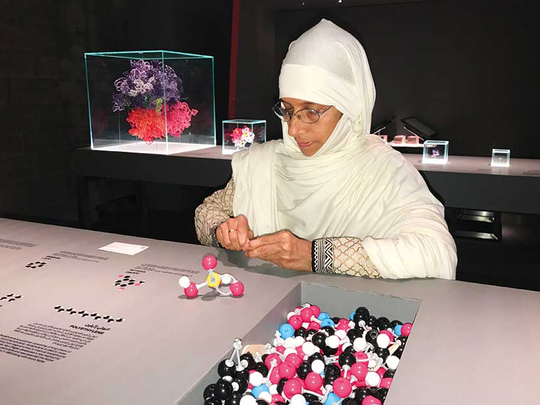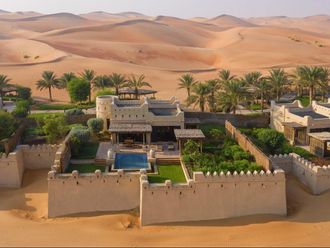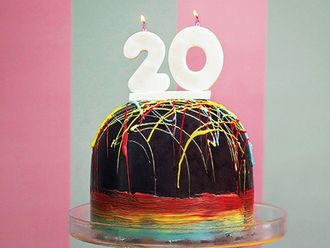
Dubai: Professor Nasreen Adel has always been intrigued by the underlying secrets of the universe.
And that curiosity she had has never waned.
Sitting with her earplugs on, Adel, 53, was on Wednesday at the newly opened Nobel Museum in Dubai assembling a larger-than-life molecule at one of the interactive sections of the exhibition.
“One of the greatest wonders of humankind are sciences. I have a great passion for this subject because it’s basically the study of everything,” said Adel, a former chemistry professor of 12 years at a university in Islamabad.
This was her third visit to the annual exhibition, which opened its doors to the public at City Walk 1 on February 4 under the theme ‘The Nobel Prize in Chemistry: Connecting Elements.’ Divided into five sections, the museum showcases the achievements of Nobel Laureates in five different areas of chemistry.
Fascinated by one of the important categories of the Nobel Prize — chemistry which is the focus at this year’s edition — Adel said her visit was the best opportunity to get a hands-on experience on how to build a 3D version of molecules.
“Molecules are part of our everyday life, we are made up of them and use them. The joy of putting these together is that it takes you closer to the actual structure. You don’t get to see molecules directly with your eyes, so it just puts reality factor into them that they exist and this is how they are arranged,” said the mother from Pakistan, who sat engrossed in the work she was doing.
Despite leaving her job as a professor and moving to Dubai to live with her husband two years ago, Adel said she admires how events like this in Dubai can allow her to spend some time with her favourite science.
“These finished models of simple and complex molecules on display have been made in so much detail for us to see. For example, we see a drop of blood but not the haemoglobin molecule in it, and this makes you think a lot about what nature is and what God has made,” she said.
Pointing to another section of the museum where a huge periodic table is on display for people to explore the different elements, she said: “This is my first time to see samples of these elements in front of my eyes. You see these elements only in books but I don’t think anyone can get the opportunity to see them even when they do their bachelor’s or master’s.”
With the museum paying tribute to the discoveries of Egyptian chemist and Nobel Prize winner Ahmad Zewail this year, Adel says she feels grateful to the discoveries scientists have made that have helped humankind.
“The chemical reactions taking place in the body or anywhere are so fast that it can’t wait for us to see, but Zewail managed to develop methods for studying chemical reactions in detail and through laser technology he was able to map these reactions and this, in turn, helped us understand it better.
“Just like how Zewail helped us understand these chemical reactions by putting an element of reality, this museum has done the same by showing us how things are or how they are arranged,” she said.
Adel said she intended to spend three hours more to build all the molecules showcased in pictures at the table. “Even though people think chemistry can be boring, it’s worth spending time seeing the truth and valuing this science. This museum is a great place for children to also get information in a light way other than only getting it in books.”
Organised by the Mohammad Bin Rashid Al Maktoum Foundation (MBRF) in association with the Nobel Museum in Sweden, the museum will run until March 3.








